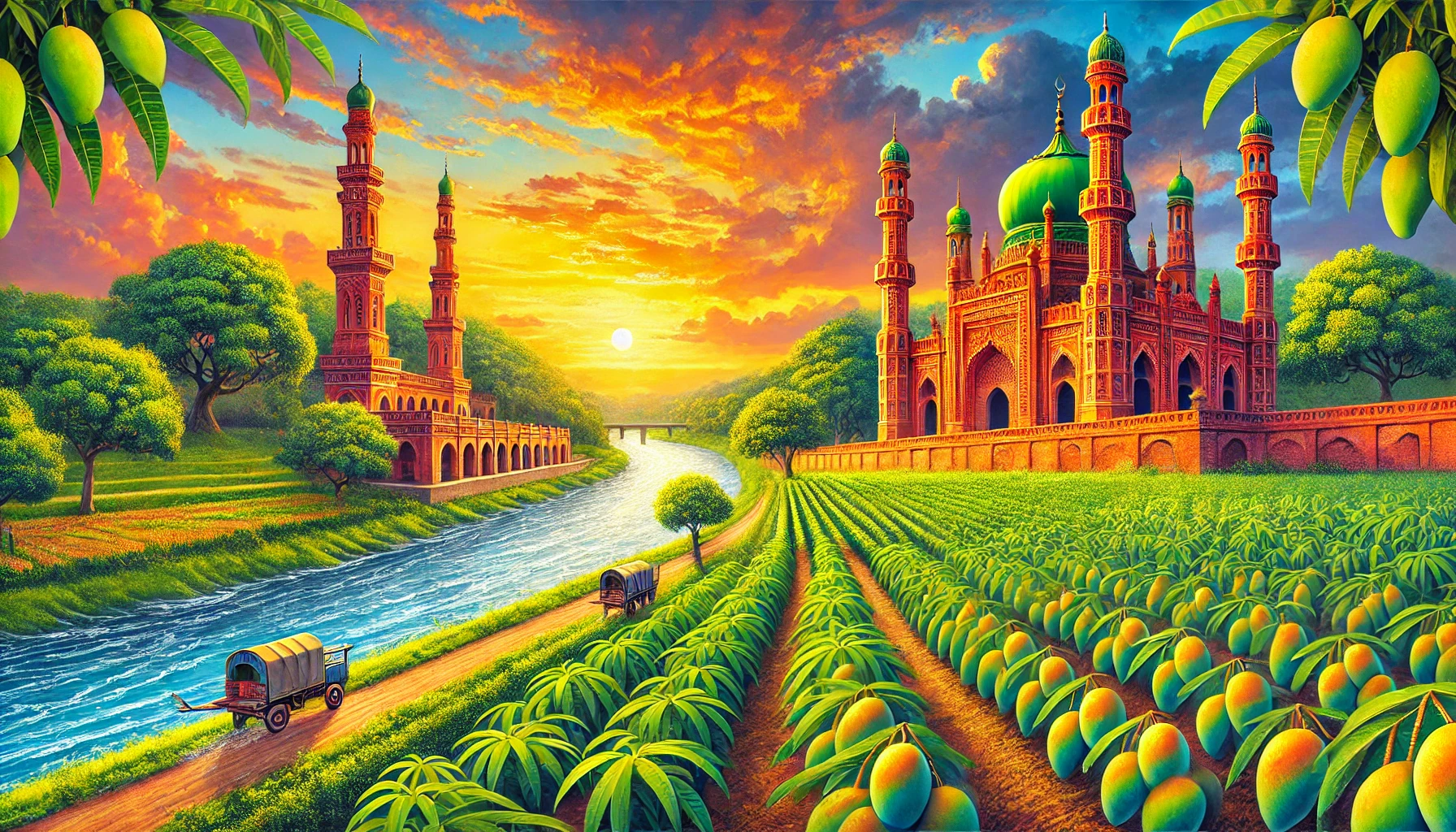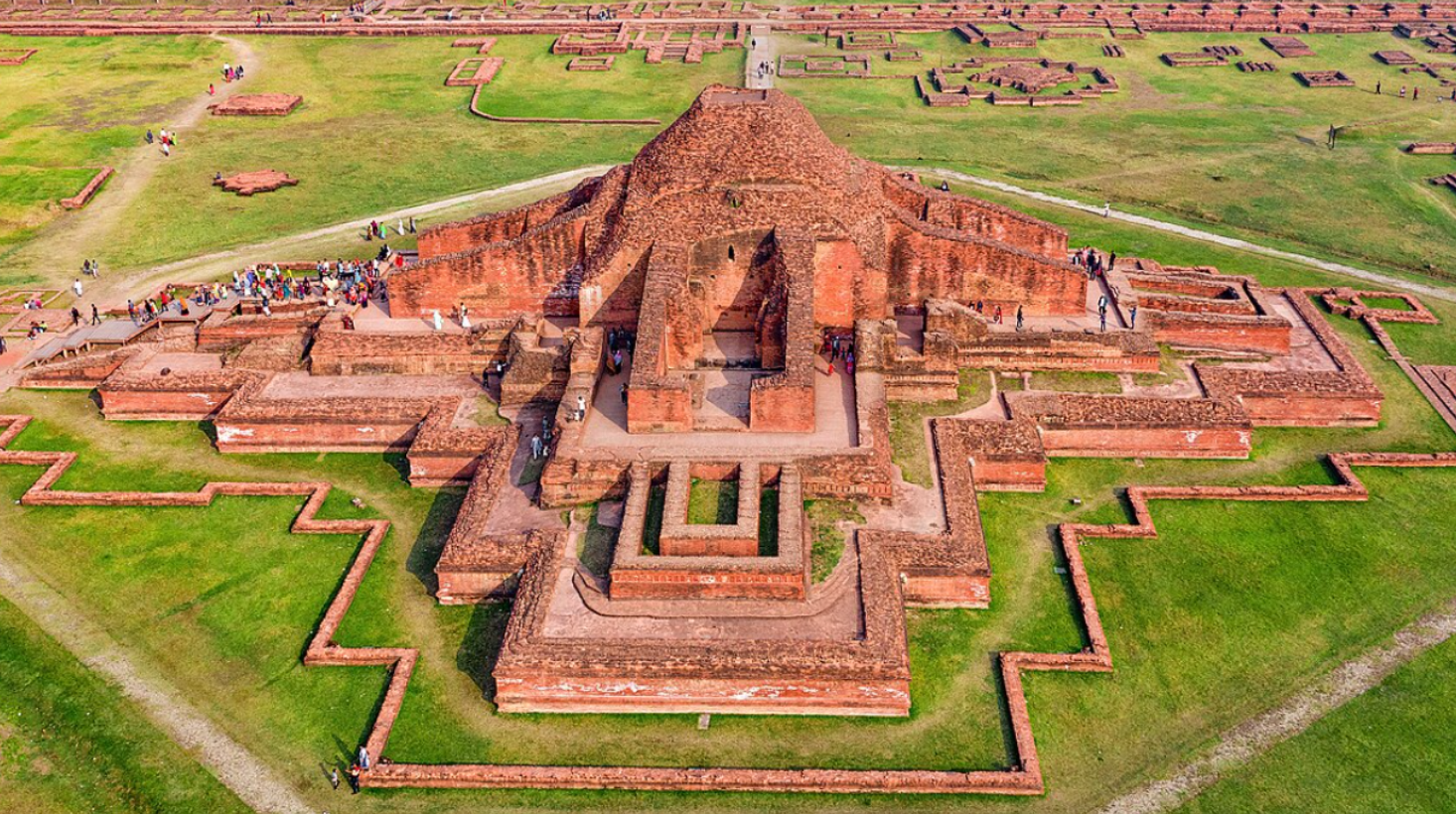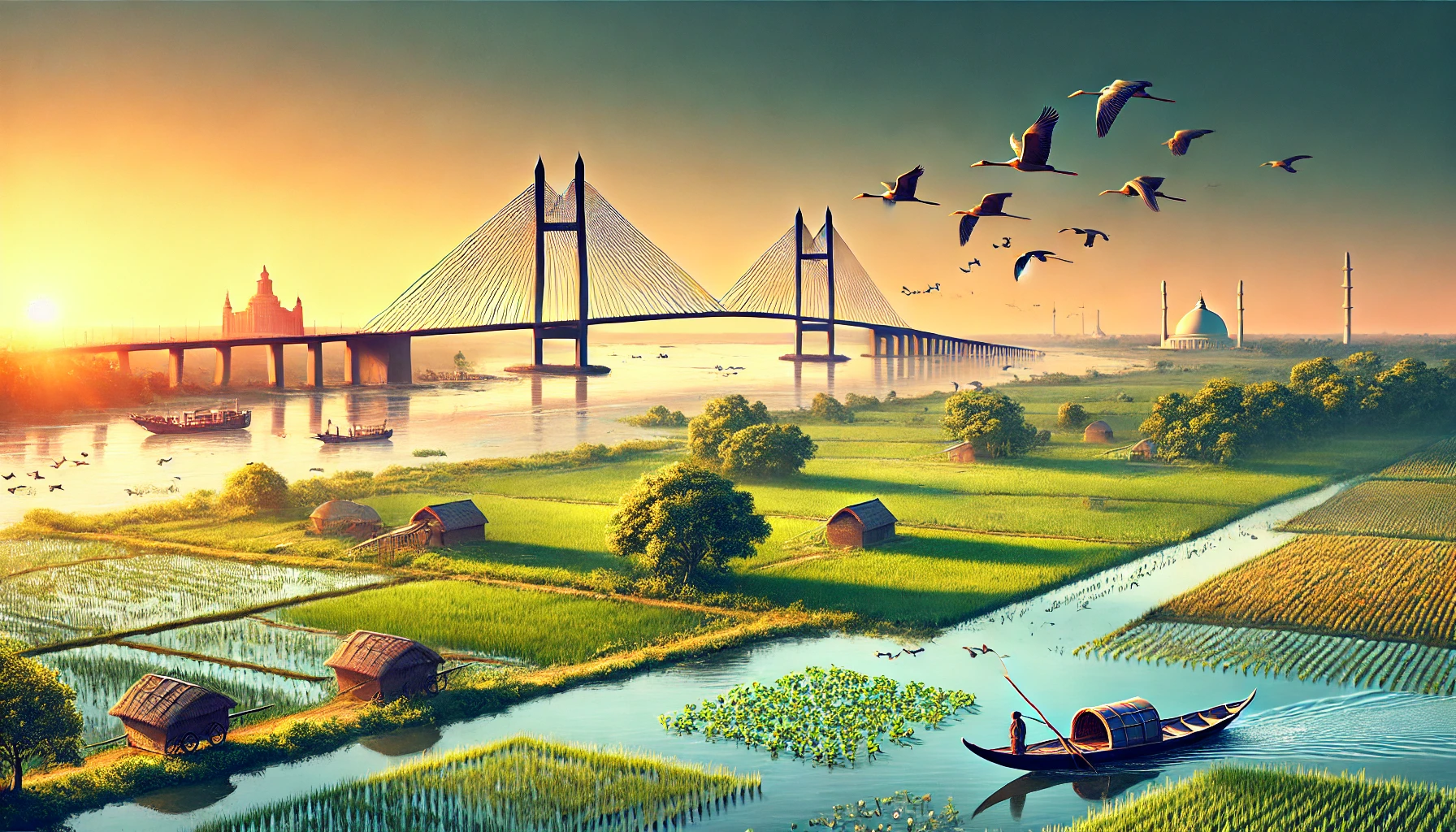Pabna, located in the Rajshahi Division of Bangladesh, is a district that beautifully combines rich cultural heritage, historical significance, natural beauty, and industrial progress. Positioned on the banks of the Padma River, it is a land of contrasts, where ancient temples coexist with modern industries, and serene wetlands complement the bustling activity of its towns.
In this blog, we delve deep into the history, administrative setup, key attractions, cultural significance, and economic contributions of Pabna.
Historical Overview
Pabna’s history is as ancient as it is diverse. The region has been a witness to the rise and fall of empires, including the Pala and Sena dynasties, and later became a significant area during the Mughal and British periods. During the Indigo Revolt of 1859-60, Pabna played a central role in resisting the oppressive practices of British indigo planters.
The district also holds a prominent place in the freedom struggle of Bangladesh, with its people contributing valiantly during the Liberation War of 1971.
Administrative Divisions of Pabna
Pabna is divided into nine upazilas, each with its own unique offerings:
- Pabna Sadar
The administrative heart of the district, Pabna Sadar is home to major institutions such as the Pabna Mental Hospital and Edward College, one of the oldest educational institutions in Bangladesh. - Ishwardi
Known as an industrial and transportation hub, Ishwardi houses the Ishwardi Export Processing Zone (EPZ) and is the site of the under-construction Rooppur Nuclear Power Plant, the first of its kind in Bangladesh. - Santhia
A primarily agricultural upazila, Santhia is recognized for its high-yield rice fields and bustling local markets. - Chatmohar
This upazila is rich in history, with landmarks like the Shiva Temple and the Khetupara Zamindar Bari reflecting its glorious past. - Bera
Situated along the Padma River, Bera is a picturesque upazila known for its fishing communities and scenic riverbanks. - Sujanagar
Sujanagar offers a blend of rural charm and historical significance, particularly with its proximity to the Atrai River. - Faridpur
A serene area known for its verdant landscapes and cultural festivals, Faridpur is perfect for those seeking tranquility. - Bhangura
This upazila is famous for its thriving trade and craft traditions, particularly in pottery and weaving. - Atgharia
Atgharia retains its rural beauty and is celebrated for its vibrant community life and seasonal fairs.
Major Attractions
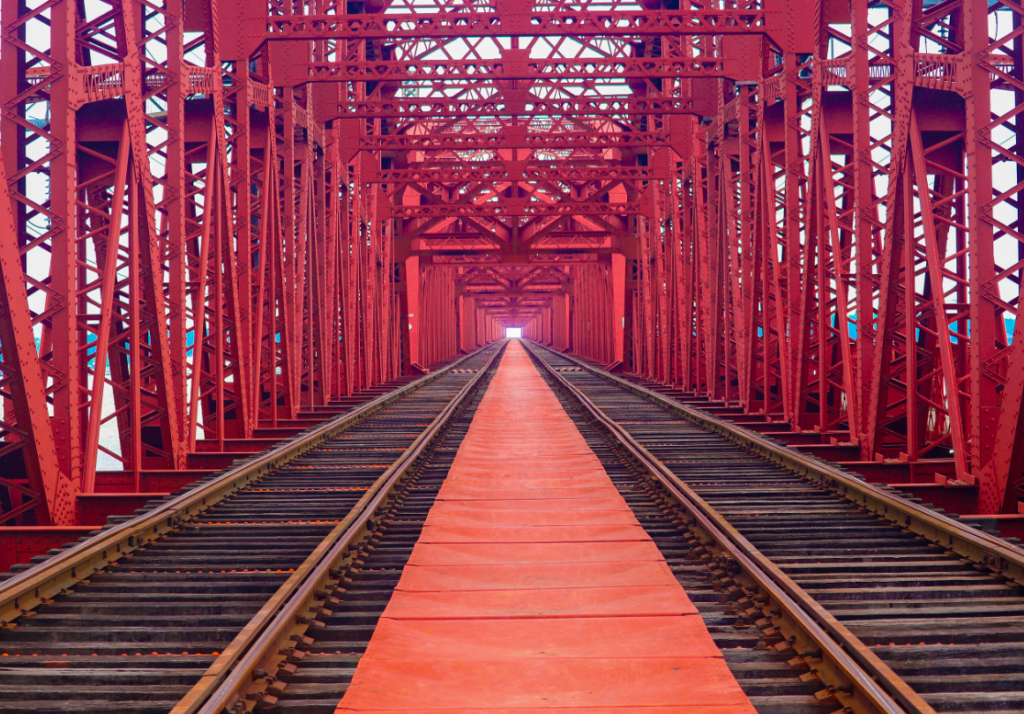
Hardinge Bridge
Hardinge Bridge and Lalon Shah Bridge
The Hardinge Bridge, constructed in 1915, is a marvel of British-era engineering. It remains one of the key railway bridges over the Padma River. Nearby, the Lalon Shah Bridge, completed in 2004, connects Pabna to Kushtia, enhancing trade and communication.
Pabna Mental Hospital
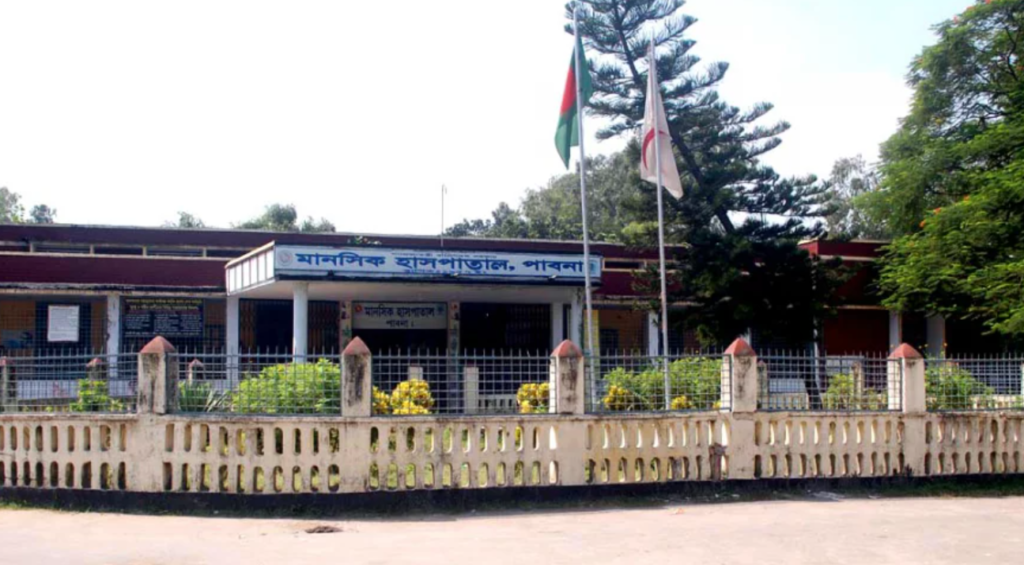
Established in 1957, this is the largest mental health facility in Bangladesh, situated in Hemayetpur. It has been a center of mental health care and research for decades.
Jor Bangla Temple, Chatmohar
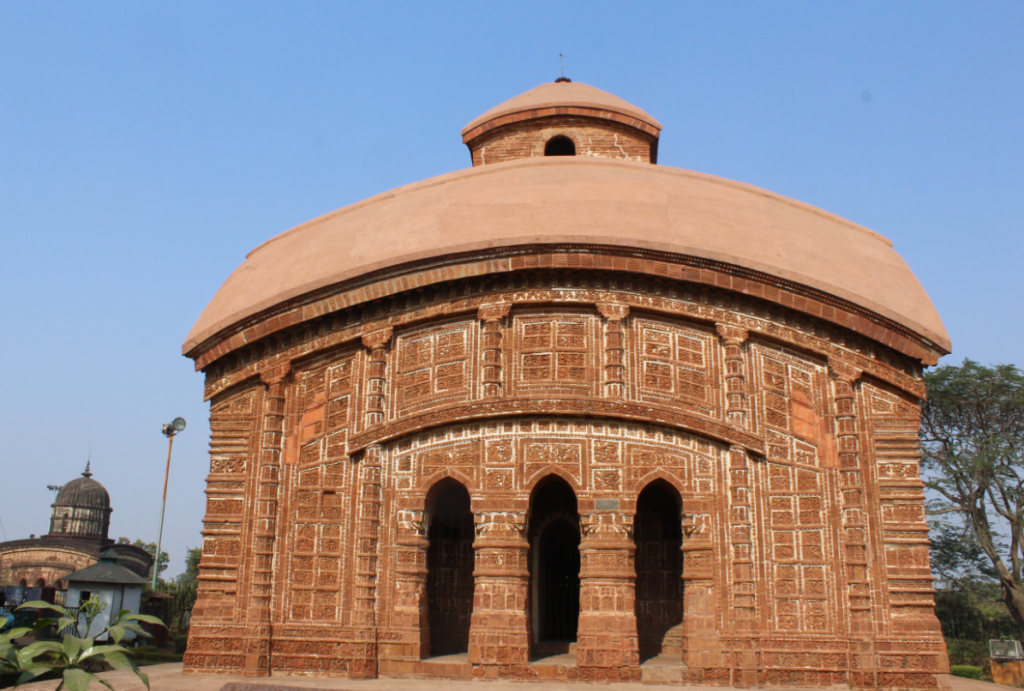
A relic of the 17th century, this temple is a masterpiece of terracotta art, showcasing intricate designs that narrate stories from Hindu mythology.
Chalan Beel
Shared with neighboring districts, Chalan Beel is the largest wetland in Bangladesh, offering stunning views of open water, lush vegetation, and diverse birdlife. It is a favorite spot for fishing, boating, and bird-watching.
Khetupara Zamindar Bari
This historical mansion provides a glimpse into the opulence of Bengal’s zamindars. The architecture is a fascinating blend of European and Mughal influences.
Hemayetpur Estate
Once a significant administrative center under British rule, this estate is now a quiet reminder of the colonial past, with its lush gardens and old structures.
Cultural Significance of Pabna
Pabna is a melting pot of cultures and traditions. The district is famous for its folk music, including the works of Lalon Fakir, whose philosophical songs continue to inspire generations. Traditional crafts like weaving, pottery, and jute products are still practiced here.
Notable Festivals
- Durga Puja: Celebrated with grandeur across the district.
- Poush Mela: A rural fair that attracts visitors with its crafts, food, and performances.
Famous Personalities
- Mir Mosharraf Hossain: One of the first Bengali Muslim novelists, known for his work Bishad Shindhu.
- Lalon Fakir: A mystic philosopher and poet whose influence can be felt in Ishwardi.
- Roquiah Sakhawat Hossain: A social reformer and pioneer of women’s education in Bengal, born in this region.
Economic Contributions Pabna
Pabna is a significant contributor to Bangladesh’s economy:
- Agriculture: Known for its production of rice, jute, sugarcane, and mustard.
- Industry: The Ishwardi EPZ and the Rooppur Nuclear Power Plant are major economic drivers.
- Textiles: Traditional weaving and modern textile industries thrive here.
Transportation
Getting to Pabna is convenient due to its robust transportation network:
- Road: Well-connected by buses and highways from Dhaka and other cities.
- Rail: The railway links, particularly through Ishwardi Junction, make travel seamless.
- Waterways: River transport on the Padma is a scenic and practical option.
Conclusion
Pabna is a district that offers a rich tapestry of history, culture, and natural beauty. Whether exploring the ancient Jor Bangla Temple, marveling at the engineering of Hardinge Bridge, or immersing yourself in the serenity of Chalan Beel, Pabna has something for everyone. It’s a destination that invites visitors to delve into its past, enjoy its present, and envision its future.
